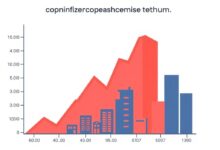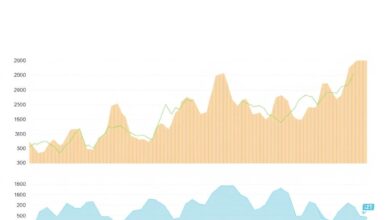Investing in foreign currency – risk or opportunity?

To navigate the complexities of forex trading, it’s essential to develop a robust strategy that accounts for market fluctuations. Focus on understanding how geopolitical events, economic indicators, and central bank policies can influence currency pairs. Monitor key data releases such as GDP growth rates, employment figures, and inflation metrics, as these often trigger significant volatility.
Utilizing risk management techniques is paramount in this fast-paced environment. Establish clear stop-loss levels and position sizes based on your risk tolerance to mitigate potential losses. Employing technical analysis tools can help identify entry and exit points effectively, allowing you to capitalize on price movements while minimizing exposure to adverse shifts.
The interconnectedness of the global economy means that currencies are not isolated; shifts in one region can have ripple effects worldwide. Stay informed about international trade agreements and economic sanctions that might impact specific currencies. This awareness will equip you to identify opportunities amidst uncertainty and leverage them for profitable trades.
Understanding Currency Volatility
To mitigate the impact of fluctuations in forex markets, consider implementing a strategic approach to diversification. Spreading investments across various assets can cushion against unpredictable swings in exchange rates, allowing for a more stable portfolio performance.
Analyze historical data to identify patterns and trends in volatility. This analysis helps in forecasting potential future movements, enabling you to make informed decisions regarding entry and exit points. Use tools like moving averages and Bollinger Bands to assess current market conditions accurately.
Incorporate options contracts as a hedge against adverse movements. These derivatives can provide protection by allowing you to lock in prices or limit losses during periods of heightened volatility.
Stay updated on geopolitical events and economic indicators that influence currency behavior. Factors such as interest rate changes, inflation reports, and political stability can lead to rapid shifts. Monitoring these elements will enhance your ability to respond proactively.
Adopt a risk management strategy that includes setting stop-loss orders. This practice minimizes potential losses during sudden market downturns, ensuring that your capital remains safeguarded against extreme fluctuations.
Consider the correlation between currencies; some pairs move in tandem while others may have an inverse relationship. Understanding these correlations can aid in making better predictions about how one currency’s movement might affect another.
Lastly, embrace technology by utilizing trading platforms equipped with real-time data analytics. Advanced charting tools and automated alerts can significantly improve your responsiveness to market changes, enhancing your overall trading efficacy amidst volatility.
Identifying Market Trends
To effectively capitalize on fluctuations, focus on analyzing economic indicators that signal shifts in market dynamics. Key indicators include interest rates, inflation data, and employment figures. Monitoring central bank announcements can provide insights into potential volatility.
Diversification remains a fundamental strategy. By spreading exposure across various currencies correlated with distinct economies, investors can mitigate risks associated with adverse movements in a single market. Consider pairing stable currencies with those from emerging markets to balance growth opportunities against stability.
Utilize tools like moving averages and relative strength indexes to identify trends over time. These technical analyses help pinpoint entry and exit points while assessing momentum shifts that could indicate a reversal or continuation of trends.
Stay informed about geopolitical events affecting the global economy; trade negotiations, political instability, or natural disasters can lead to sudden price changes. Engaging with real-time news feeds ensures you remain agile in your decision-making process.
Lastly, maintaining a flexible approach is crucial. Regularly reassess your strategies based on evolving market conditions and emerging data to optimize your position amid constant change.
Diversification Strategies Explained
To effectively manage exposure in forex trading, implement these diversification strategies:
- Currency Pair Diversification: Trade multiple pairs to spread risk. Consider both major and exotic pairs to balance volatility.
- Asset Class Integration: Combine currency positions with equities or commodities. This can mitigate downturns in one market segment by leveraging stability in another.
- Geographical Diversification: Engage with currencies from various regions. Economic conditions vary globally; diversifying across continents can buffer against localized shocks.
- Time Frame Variation: Use different time frames for trades–day trading, swing trading, and long-term investing–to adapt to changing market dynamics while reducing specific risks tied to short-term fluctuations.
Focus on systematic allocation of capital across these strategies to enhance resilience against unforeseen shifts in the global economy.
- Risk Assessment: Regularly evaluate the correlation between assets. Lower correlations typically yield better diversification benefits.
- Regular Rebalancing: Periodically adjust your portfolio based on performance metrics. This ensures that no single position disproportionately affects overall returns.
This structured approach not only mitigates potential losses but also uncovers new avenues for profit amidst global economic changes.
Regulatory Considerations Overview
Understand the legal frameworks governing forex transactions in various jurisdictions. Compliance with regulations is paramount for safeguarding assets and ensuring smooth operations within the global economy. Key bodies like the SEC in the U.S. or ESMA in Europe set forth guidelines that must be adhered to by brokers and traders alike.
Stay informed about Anti-Money Laundering (AML) directives and Know Your Customer (KYC) requirements, which are designed to prevent illicit activities. These regulations not only protect investors but also enhance market integrity, making it essential for participants to maintain strict adherence.
Consider taxation implications on profits derived from forex trading. Different countries have varying tax treatments which can significantly impact net returns. Consulting with a financial advisor who understands both local and international tax laws is advisable for optimal financial planning.
Leverage technology to monitor compliance standards. Automated systems can help ensure that trades adhere to regulatory mandates, minimizing human error and enhancing operational efficiency.
Keep an eye on geopolitical developments that may prompt changes in regulations. Political stability is often reflected in regulatory environments; thus, fluctuations can present both challenges and opportunities within the forex market. Awareness of such shifts can inform diversification strategies, allowing for better positioning against potential downturns.
Finally, engage with professional networks or forums where regulatory updates are discussed. Staying connected with industry experts can provide insights into upcoming changes that may affect trading strategies or risk management practices effectively.







